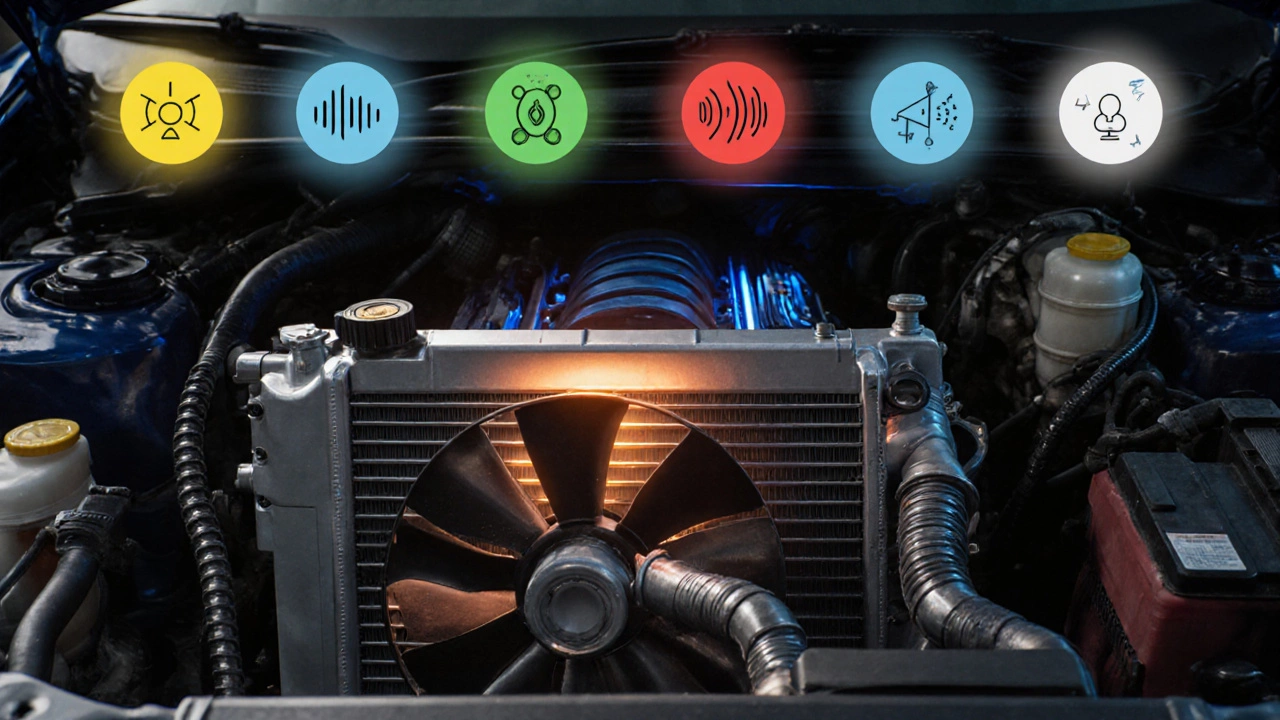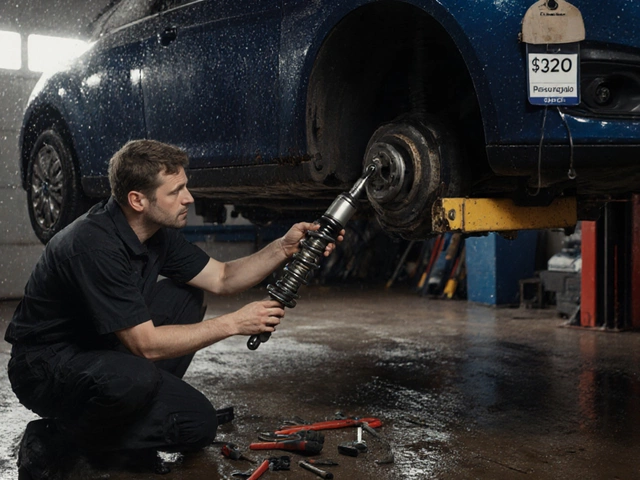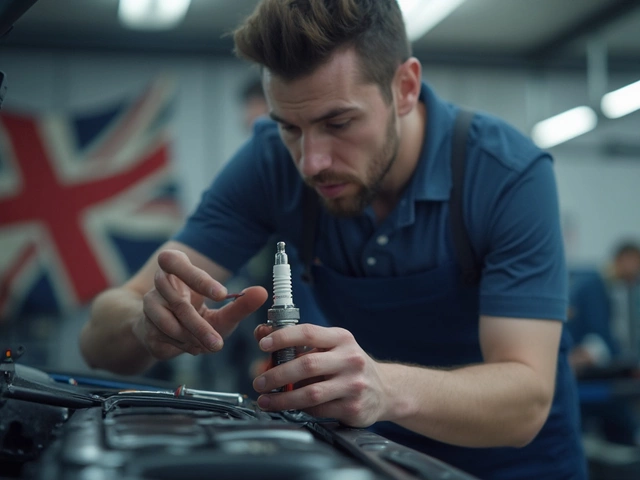Radiator Noise Diagnostic Tool
Identify Your Radiator Noise
Select the noise you're hearing to get instant diagnosis and recommended actions.
Diagnosis Results
Likely Cause
Next Steps
When your car starts making odd noises, the radiator is often a suspect. The radiator is a heat‑exchange component that keeps the engine from overheating by dissipating heat from the coolant. Knowing what a failing radiator sounds like can save you from a costly breakdown. Below you’ll find the most common noises, what they usually indicate, and how to act before the engine gets serious damage.
Quick Takeaways
- High‑pitched whine usually means air trapped in the cooling system.
- Gurgling or bubbling points to a leak or low coolant level.
- Clunking or knocking often signals a broken radiator hose or internal corrosion.
- If you hear a steady roar that gets louder with engine revs, the fan or water pump could be failing.
- Always check coolant level, temperature gauge, and look for visible leaks before diagnosing the sound.
How a Radiator Fits Into the Cooling System
The cooling system is a closed loop that includes the coolant, a water pump, a thermostat, hoses, a radiator fan, and the radiator cap. The pump pushes hot coolant into the radiator where the heat is released to the air. The thermostat regulates flow based on temperature, while the fan kicks in when airflow isn’t enough (like at a stop). Any failure in this chain can create a distinct sound that starts at the radiator and travels through the engine bay.
Common Radiator Sounds and Their Likely Causes
| Noise | Likely Cause | What to Check | Urgency |
|---|---|---|---|
| High‑pitched whine or squeal | Air trapped in coolant, failing fan belt | Coolant level, bleed the system, inspect fan belt tension | Medium - can lead to overheating if not fixed |
| Gurgling / bubbling | Low coolant, leak in hose or radiator, failing water pump | Inspect hoses, check for puddles under car, examine pump | High - overheating risk |
| Clunking or knocking | Broken hose, internal corrosion, cracked radiator pipe | Visual inspection of hoses, pressurize system, look for cracks | High - may cause sudden loss of coolant |
| Steady roar that grows with revs | Fan motor failing, debris in fan, water pump bearing wear | Listen to fan while idling, spin fan by hand, check pump noise | Medium - can become severe under load |
| Hissing or whistling | Pressurized coolant escaping through a leak, cracked radiator cap | Check cap seal, spray coolant with water to locate leak | High - loss of pressure leads to overheating |
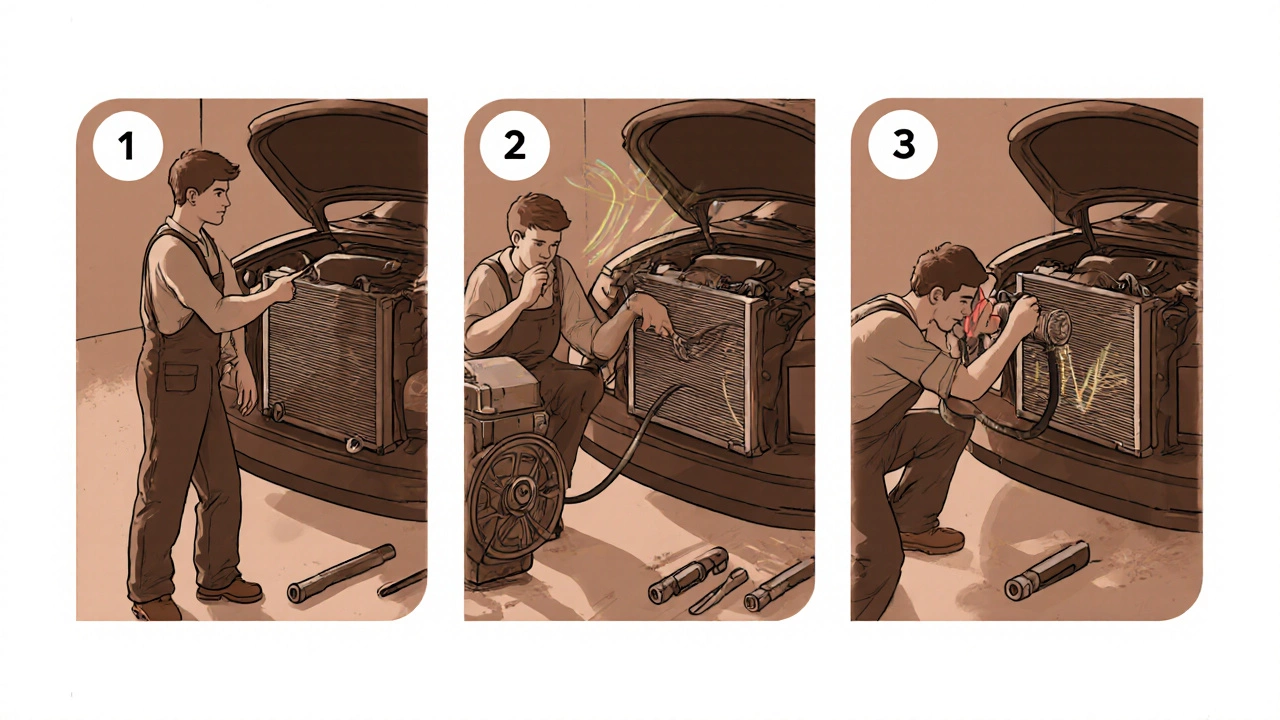
Step‑by‑Step Diagnosis of Radiator Noises
- Park safely and let the engine cool. Never open the radiator cap while hot; you could get scalded.
- Open the hood and locate the radiator, fan, and hoses. Note the temperature gauge reading.
- Start the engine and let it idle. Listen carefully: is the noise coming from the top (fan) or the sides (hoses, pump) of the radiator?
- Check coolant level in the overflow tank. If it’s below the minimum mark, add the correct coolant mixture.
- Inspect all hoses for bulges, cracks, or loose clamps. Give each hose a gentle squeeze - a soft spot might indicate a leak.
- With the engine still running, carefully feel the radiator fan blades. If they wobble or make a grinding sound, the fan bearing is likely bad.
- Turn the engine up to 3000 rpm. If the noise gets louder in direct proportion, the water pump bearings are suspect.
- After the test, turn off the engine, let it cool, then pressurize the system with a radiator pressure tester (available at most auto parts shops). Any drop in pressure points to a leak.
- Document what you heard and observed. This information is invaluable if you need to call a mechanic.
Preventive Maintenance to Keep Radiator Noise at Bay
Regular care can stop most annoying sounds before they start. Here are a few habits that work well for everyday drivers:
- Check coolant quarterly. Look for proper concentration (usually 50/50 antifreeze and water) and adequate level.
- Inspect the radiator cap each year; a weak spring reduces system pressure and creates hissing.
- Replace the fan belt every 60,000 km or at the first sign of wear. A slipping belt produces the classic high‑pitched whine.
- Flush the cooling system every 2‑3 years to remove rust and sediment that can clog the radiator cores.
- Keep the front of the car clean. Dirt and debris can jam the fan or block airflow, leading to a louder fan under load.
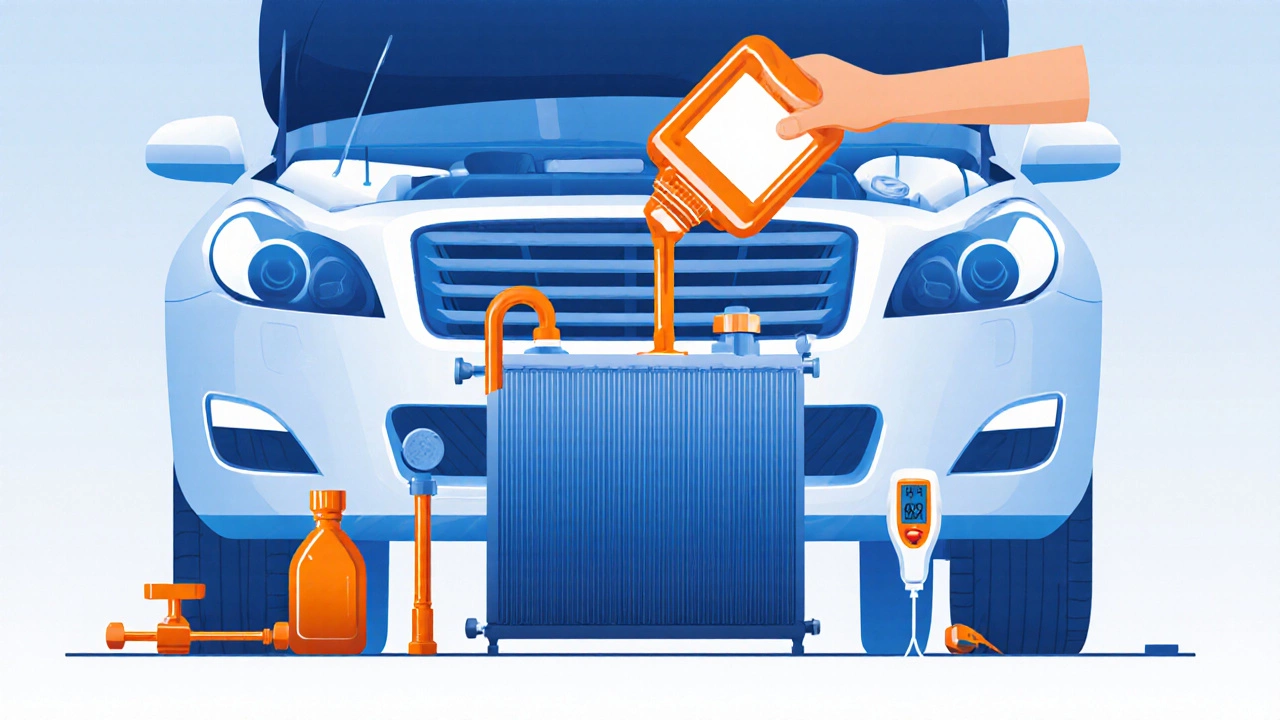
When to Call a Professional
If you notice any of the following, it’s time to hand the keys over to a qualified technician:
- Persistent overheating despite normal coolant levels.
- Continuous gurgling that doesn’t stop after bleeding the system.
- Clunking noises that improve when the engine is off - this usually means a broken hose or internal corrosion.
- Smoke or steam coming from the engine bay.
- Any sound that feels like metal grinding, especially if it’s accompanied by vibration.
Professional mechanics have pressure testing equipment, thermal imaging cameras, and the expertise to replace a radiator core, water pump, or fan assembly safely.
Tools and Materials You Might Need
| Tool / Material | Purpose |
|---|---|
| Socket set (10‑mm, 13‑mm) | Remove hose clamps, tighten the radiator cap |
| Coolant pressure tester | Detect hidden leaks without dismantling the system |
| Thermometer or infrared gun | Check actual radiator surface temperature |
| Catch basin | Collect coolant when draining for inspection |
| Replacement coolant (50/50 mix) | Top‑up after bleeding air |
Bottom Line
The radiator noise you hear is often a clue to a deeper cooling‑system issue. By learning the typical sounds-whine, gurgle, clunk, roar or hiss-you can pinpoint whether it’s a simple air‑in‑the‑system problem or something that needs immediate professional attention. Regular checks, coolant flushes, and keeping the fan clean keep those unwanted noises quiet and your engine happy.
What does a high‑pitched whine from the radiator mean?
A high‑pitched whine usually indicates air trapped in the coolant or a slipping fan belt. Bleed the cooling system and check belt tension to fix it.
Why does my radiator make a bubbling sound?
Bubbling means the coolant is boiling or a leak is letting air in. Check the coolant level, inspect hoses for leaks, and look at the water pump for damage.
Can a broken radiator hose cause a knocking noise?
Yes. A cracked or loose hose can slam against other components, creating a clunk or knock. Tighten or replace the hose immediately.
What should I do if the radiator fan sounds like it’s grinding?
A grinding fan points to worn bearings or debris. Turn off the engine, remove the fan for inspection, and replace the fan assembly or clean out any obstructions.
Is it safe to drive with a hissing radiator sound?
A hissing sound usually means coolant is escaping under pressure. It can quickly lead to overheating, so you should stop, locate the leak, and have it repaired before driving further.
